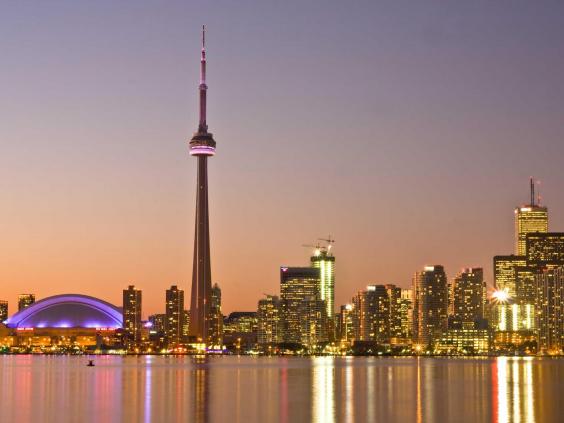Four Real World Ways to Create More Jobs
What Works the Best?
Updated January 20, 2018
The goal of all job creation strategies is to stimulate healthy economic growth.
Economists agree that annual growth between 2 and 3 percent is
sustainable. It will create the 150,000 jobs per month needed to employ
new workers entering the labor force.
In a free market economy, the government need not do anything when growth is healthy. Capitalism encourages small businesses to compete, thereby creating better ways to meet consumers' needs. Because of this, small businesses account for 65 percent of all new jobs created. The proper role of government in this healthy economy is to provide a supportive environment for growth.
Nevertheless even a healthy economy is subject to the bubbles and busts of the business cycle. When the economy contracts into a recession, the government must create solutions to unemployment. It may use expansive monetary policy, expansive fiscal policy or both to stimulate job growth. Some are more cost-effective in creating jobs than others. Here are the four that give the most bang for the buck.
In a free market economy, the government need not do anything when growth is healthy. Capitalism encourages small businesses to compete, thereby creating better ways to meet consumers' needs. Because of this, small businesses account for 65 percent of all new jobs created. The proper role of government in this healthy economy is to provide a supportive environment for growth.
Nevertheless even a healthy economy is subject to the bubbles and busts of the business cycle. When the economy contracts into a recession, the government must create solutions to unemployment. It may use expansive monetary policy, expansive fiscal policy or both to stimulate job growth. Some are more cost-effective in creating jobs than others. Here are the four that give the most bang for the buck.
1
Reduce Interest Rates
Expansionary monetary policy is when a central bank, such as the Federal Reserve, uses its tools to stimulate the economy. This often means lowering the fed funds rate in order to increase the money supply. The action increases liquidity, thereby giving banks more money to lend. As a result, mortgage and other interest rates decline. With cheaper credit, consumers can borrow and spend more, allowing businesses to expand to meet the increased demand. Companies hire more workers, whose incomes rise, allowing them to shop even more.
The Fed can also increase the money supply through quantitative easing. It creates credit out of thin air to buy U.S. Treasurys, mortgage-backed securities and any other kinds of debt. The Fed has many other tools, such as lowering the federal reserve requirement and lowering the rate on the discount window.
This should be done first when a recession is looming. It’s because decisions can be made quickly through the regular Federal Open Market Committee meeting. The Fed can quickly put trillions of dollars into the economy by making credit available without increasing the U.S. debt.
The main disadvantage of this is that it relies on bank lending. It doesn't directly put money into consumers' pockets. It can take six months or more to stimulate demand.
It doesn't work once a severe recession is underway. That's because there won’t be much demand for loans. If people feel too poor to borrow, it doesn't matter how low interest rates are.
If the recession continues, then banks become unwilling to lend. That's because borrowers' credit scores fall. Banks won’t be willing to risk taking on bad loans.
Another con is that, if overdone, expansive monetary policy can trigger inflation. To prevent that from happening, the central bank must begin raising rates as soon as the recession is over.
A University of Massachusetts at Amherst study found that all government spending is not created equal. The most cost effective ones are building roads, bridges and other public works. One billion dollars spent on public works created 19,975 jobs.
Public works creates jobs because it puts people right to work. The federal government can quickly fund construction projects already in the approval pipeline. It can hire contractors, send money to the states or hire workers directly. That was one reason why the American Recovery and Reinvestment Act ended the Great Recession in 2009. It spent $87 billion in shovel-ready construction projects.
(Source: “The Employment Effects of Military and Domestic Spending Priorities”, University of Massachusetts at Amherst Department of Economics and Political Economy Research Institute, October 2007.)
3
Spend on Unemployment Benefits
Unemployment benefits create so many jobs because the unemployed must spend all the benefits received. They buy necessities such as groceries, clothing and housing right away. Retailers and manufacturers respond to the added demand by hiring more workers to keep up.
These benefits also help keep the unemployed from becoming homeless. It is more difficult for them to find a job if they lose a steady address.
The third most effective spending solution is education. For each $1 billion spent, it created 17,687 jobs.
4
Cut Payroll Taxes, Especially for New Hires
All tax cuts are not created equal when it comes to job creation though. A Congressional Budget Office study found that, for example, the Bush tax cuts created 4,600 jobs for every $1 billion in foregone tax revenue.
Payroll tax cuts did better. They created 13,000 new jobs for every $1 billion spent. That's because companies use the tax savings in one of four ways. All of them increased the demand needed to drive job growth for the following four reasons.
- Reduce prices.
- Increase employee wages.
- Buy more supplies.
- Hire more workers directly.
To learn more about why so many people favor tax cuts as the best form of job creation, see Supply-side Economics, Trickle-Down Economics and Laffer Curve.
5
Doesn't Defense Spending Create Jobs?
This finding surprises many people. They've heard that the New Deal failed. The government needed to gear up for World War II and to end the Great Depression. It made sense back then when you consider the fact that World War II was much more labor-intensive than today's defense spending. Now, more is spent on drones, F-16s and aircraft carriers than the salaries of military personnel. Second, there were no unemployment benefits during the Great Depression, just soup lines.
For more on the job creation ability of government spending,
6
When to Use Expansionary Fiscal Policy
One disadvantage of fiscal policy is that legislators disagree on whether tax cuts or increased spending is more cost effective. The resulting debate can delay action.
Another disadvantage is that it can increase budget deficits and the U.S. debt. That's why Congress should cut spending or raise taxes once the recession is over.
7
Job Creation Statistics
In fact, jobs created after the last few recessions have led to greater income inequality. This happened because rehired workers became willing to take jobs that paid less. The high level of long-term unemployed and underemployed individuals in this recession means that this trend will only continue. For month-by-month job creation statistics since 2008.
8
Which President Created the Most Jobs?
But Obama created 22.3 million jobs from the worst part of the recession (January 2010) through to the end of his term. That’s because there were more jobs when he started. The recession continued during the first six months of his term. The economy continued to shed jobs, reaching the low point in January 2010.
/GettyImages-473996692-57aadfaf3df78cf459370fdb.jpg)
/bridge-56a9a6975f9b58b7d0fdae13.jpg)
/184656376-56a9a7603df78cf772a94063.jpg)
/interview-56a9a7475f9b58b7d0fdb332.jpg)
/GettyImages-526324524-58cb3c5e3df78c3c4f74afca.jpg)
/govt-spending-56a9a6a53df78cf772a93b43.jpg)
/Job_Fair_John_Moore-56a9a62b3df78cf772a93716.jpg)
/bill-clinton-GettyImages-773691-57c492c25f9b5855e5e13c30.jpg)
/man-working-56a634725f9b58b7d0e06689.jpg)















/neumunster-abbey-at-lower-city-grund-former-battlement-old-town-unesco-wolrd-heritage-site-luxembourg-city-grand-duchy-of-luxembourg-europe-606352061-58c707423df78c353cd48d55.jpg)
/a-cog-railway-to-jungfraujoch-120013305-58c707523df78c353cd4af27.jpg)
/manhattan-588204153-58c7078b3df78c353cd52a9c.jpg)
/sydney-opera-house-in-sydney-harbor-with-downtown-skyline-sydney-new-south-wales-australia-103455489-58c707ad3df78c353cd56efa.jpg)
/red-cabins-in-reine-norway-479357391-58c707df5f9b58af5ca1930e.jpg)